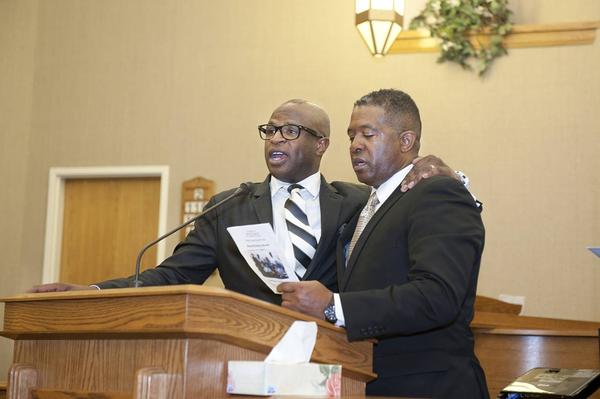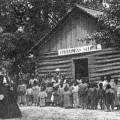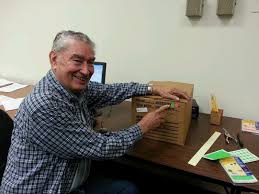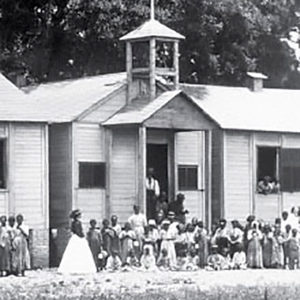 Abraham Lincoln once said, “As I would not be a slave, so I would not be a master. This expresses my idea of democracy. Whatever differs from this to the extent of the difference, is no democracy.” On 1 January 1863, he issued a presidential proclamation and executive order known as the Emancipation Proclamation.
Abraham Lincoln once said, “As I would not be a slave, so I would not be a master. This expresses my idea of democracy. Whatever differs from this to the extent of the difference, is no democracy.” On 1 January 1863, he issued a presidential proclamation and executive order known as the Emancipation Proclamation.
Emancipation freed approximately 4 million slaves. In turn, the Freedmen’s Bureau was established to help those once held in the bonds and tyranny of slavery to transition to living life as a free people and as citizens by providing food, housing, education, and medical care. As citizens, for the first time in U.S. history, their names were recorded and preserved so that future generations would know and never forget those who blazed the trails of freedom before them.
To help make those records accessible to those tracing their family history and wishing to learn about their slave ancestry, the Freedmen’s Bureau Project was created. The project is a collaborative partnership between FamilySearch International and the National Archives and Records Administration (NARA), the Smithsonian National Museum of African American History and Culture, the Afro-American Historical and Genealogical Society (AAHGS), and the California African American Museum. The objective of the project is to help both Black Canadians and Black Americans reconnect with their Civil War-era ancestors by focusing on records of former U.S. slaves who became citizens. Thousands of volunteers are helping to type, and index information from the Freedmen’s Bureau records so that they are searchable in an online database. As of early May 2016, the project is 78 percent complete.
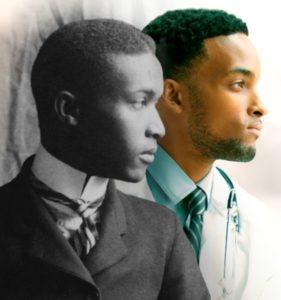 Marcus Mosiah Garvey, Jr., a Jamaican political leader, publisher, journalist, entrepreneur, orator, and founder of the Universal Negro Improvement Association and African Communities League once said, “A people without knowledge of their past history is like a tree without roots.” On 16 April 2016, approximately 500 people gathered at the Etobicoke Ontario building of The Church of Jesus Christ of Latter-day Saints in Toronto, Ontario, Canada, for the inaugural Canadian Black History Summit. FamilySearch International (the genealogical arm of the Church) and the Ontario Black History Society co-hosted the free conference. Those participating in the conference had the opportunity to connect with Black genealogy experts and Black history, and to learn more about the Freedmen’s Bureau Project.
Marcus Mosiah Garvey, Jr., a Jamaican political leader, publisher, journalist, entrepreneur, orator, and founder of the Universal Negro Improvement Association and African Communities League once said, “A people without knowledge of their past history is like a tree without roots.” On 16 April 2016, approximately 500 people gathered at the Etobicoke Ontario building of The Church of Jesus Christ of Latter-day Saints in Toronto, Ontario, Canada, for the inaugural Canadian Black History Summit. FamilySearch International (the genealogical arm of the Church) and the Ontario Black History Society co-hosted the free conference. Those participating in the conference had the opportunity to connect with Black genealogy experts and Black history, and to learn more about the Freedmen’s Bureau Project.
Rosemary Sadlier, a presenter at the summit, described the proceedings using a word from the Ghanaian Twi language – “Sankofa” – which translated means “go back and get it.” She remarked that the event was an excellent opportunity for those participating “to go back and reclaim our past so we can move forward, … so we can understand why and how we came to be and who we are today.” Thom Reed, the senior marketing manager of FamilySearch and a specialist for the Freedmen’s Bureau Project, commented, “We are tearing down walls because not having an ancestry is like not existing. The records we will be releasing in the fall are making it possible for individuals to find themselves for the first time.”
 Guests at the summit included members of Parliament; government officials; leaders of black history sites, black churches and black organizations from across Ontario; and Ontario Mormon leaders. Nikki Clark, president of the Ontario Black History Society, gave the opening remarks. The presenters at the summit included notable Black history experts. Among those presenting at the conference were Darius Gray (author, historian, journalist and co-director of the Freedman’s Bank Project and Bryan Prince (author, historian, and consultant). Shannon Prince (curator of the Buxton National Historic Site and Museum), Thom Reed (FamilySearch senior marketing manager), Rosemary Sadlier (author and historian) and Dr. Bryan Walls (author and founder of the John Freeman Walls Historic Site and Underground Railroad Museum) were also presenters.
Guests at the summit included members of Parliament; government officials; leaders of black history sites, black churches and black organizations from across Ontario; and Ontario Mormon leaders. Nikki Clark, president of the Ontario Black History Society, gave the opening remarks. The presenters at the summit included notable Black history experts. Among those presenting at the conference were Darius Gray (author, historian, journalist and co-director of the Freedman’s Bank Project and Bryan Prince (author, historian, and consultant). Shannon Prince (curator of the Buxton National Historic Site and Museum), Thom Reed (FamilySearch senior marketing manager), Rosemary Sadlier (author and historian) and Dr. Bryan Walls (author and founder of the John Freeman Walls Historic Site and Underground Railroad Museum) were also presenters.
The experience of the summit was both eye-opening and life-altering for many of the attendees as they learned how important it is to research their family history, and the brick walls that many descendants of former U.S. slaves have faced when searching their family history beyond 1870.
About Keith L. Brown
Keith L. Brown is a convert to The Church of Jesus Christ of Latter-day Saints, having been born and raised Baptist. He was studying to be a Baptist minister at the time of his conversion to the LDS faith. He was baptized on 10 March 1998 in Reykjavik, Iceland while serving on active duty in the United States Navy in Keflavic, Iceland. He currently serves as the First Assistant to the High Priest Group for the Annapolis, Maryland Ward. He is a 30-year honorably retired United States Navy Veteran.

